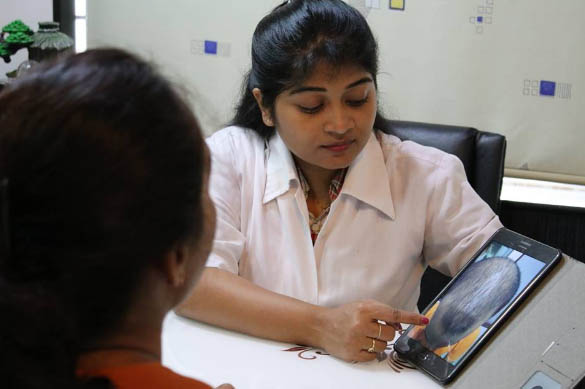Definition
Plasmapheresis is done to exchange plasma in the blood. Plasma is the liquid part of the blood that does not contain cells. Once the plasma is removed, fresh plasma or a plasma substitute is added back to the blood.
Reasons for Procedure
Plasmapheresis removes autoantibodies from the blood. Autoantibodies are proteins found in plasma. They mistakenly attack your body’s own tissues. In some cases, this procedure is used to remove toxins or metabolic substances from the blood.
Plasmapheresis is used to treat the following:
- Autoimmune diseases—conditions that occur when the body’s immune system attacks its own tissues and organs
- Neurological diseases—disorders affecting the nervous system
- Very high levels of cholesterol that are not reduced by diet and medicines
- Toxins that can get into your blood
Possible Complications
Complications are rare, but no procedure is completely free of risk. If you are planning to have plasmapheresis, your doctor will review a list of possible complications, which may include:
- Anaphylaxis—a dangerous allergic reaction to the solutions used in plasma replacement, which usually starts with itching, wheezing, or a rash.
- Mild allergic reaction to the procedure—may cause fever, chills, or rash
- Infection
- Bleeding
- Drop in blood pressure
- Bruising or swelling
Plasmapheresis may not be appropriate for people with certain clotting disorders.
What to Expect
Prior to Procedure
Leading up to your procedure:
- Review your regular medicines with your doctor. You may be asked to stop taking some drugs.
- Arrange to have someone drive you home from the hospital.
- Drink plenty of noncaffeinated and nonalchoholic beverages.
The day of your treatment:
- Eat a well-balanced meal before going for treatment, unless instructed otherwise by your doctor.
- Wear comfortable clothing with sleeves that can easily be pulled above the elbows.
- Bring a book or personal music player to help pass the time during the procedure.
- Empty your bladder before the procedure.
Anesthesia
Anesthesia is not needed for this procedure.
Description of the Procedure
Plasmapheresis is done using an apheresis machine. The machine works in one of two ways. In the first method, the blood cells may be separated from the plasma by spinning the blood at high speeds. The second method uses a special membrane. The membrane has tiny pores that only the plasma can pass through, leaving the blood cells behind.
You will be asked to lie in a bed or sit in a reclining chair. Two needles attached to a catheter tube will be inserted into veins. In some cases, a needle will be inserted into each arm. For others, one needle may be inserted into your arm and the other into the opposite foot. If the veins in your limbs are too small to use, a long-duration catheter will be inserted. It will be placed in a vein in your shoulder or groin area.
Blood will be taken out of your body through one of the catheter tubes. It will then go into the apheresis machine. Once in the machine, the blood cells will be separated from the plasma. The blood cells will be mixed with replacement plasma or a plasma substitute. The new mixed blood will then be returned to your body through the other tube.
Immediately After Procedure
You will be asked to rest for a short period of time.
How Long Will It Take?
- A single plasmapheresis treatment can take 1 to 3 hours.
- The length of treatment will depend on your body size and the amount of plasma that needs to be exchanged.
- You will most likely need to have several treatment sessions per week for two weeks or more.
- Frequency of treatments will depend on your diagnosis.
How Much Will It Hurt?
You may experience pain when the needles are inserted. The procedure itself is painless.
Average Hospital Stay
- The procedure is usually done outside of the hospital. In such cases, you will be allowed to leave after a short resting period.
- In some instances, hospitalization is required. Length of stay will depend on your diagnosis.
Post-procedure Care
When you return home, do the following to help ensure a smooth recovery:
- Avoid hot foods or beverages for at least two or three hours after treatment. They can dilate blood vessels and may make you feel light-headed.
- Avoid sun and hot weather on the day of treatment.
- Avoid hot showers and saunas on the day of treatment.
- To lessen the chance of excessive bleeding, do not shave or cut your fingernails for at least 4-6 hours after treatment.
- You can usually return to your regular activities the day of your treatment.
- Be sure to follow your doctor’s instructions .
Improvement can occur within days or weeks, depending on the condition being treated. Benefits usually last for up to several months, but may last longer. Over time, autoantibodies may again be produced by your body. Because of this, plasmapheresis is mainly used as a temporary treatment.
Call Your Doctor
After you leave the hospital, contact your doctor if any of the following occurs:
- Excessive bruising, bleeding, or swelling at the needle insertion sites
- Signs of infection, including fever and chills
- Seizures
- Excessive itching or rash
- Nausea and/or vomiting
- Pain that you cannot control with the medicines you have been given
- Cough, wheezing, shortness of breath, or chest pain
- Irregular heartbeat
- Abdominal pain
- Joint pain, fatigue, stiffness, or other new symptoms
- Yellowish tone to your skin or eyes
In case of an emergency, call for medical help right away.






















